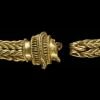
History Hunters: Gallery
Member AlbumsHome :: Register :: FAQ :: Login
Album list :: Last uploads :: Last comments :: Most viewed :: Top rated :: My Favorites :: Search
| Home > History Hunters > Treasures |
 |
 |
 |
FILE 8/63 |  |
 |
 |
|
|||
|
 |
||||||||
|
||||||||
 |
| Rate this file (No vote yet) | |||||
 |
 |
 |
 |
 |
 |



